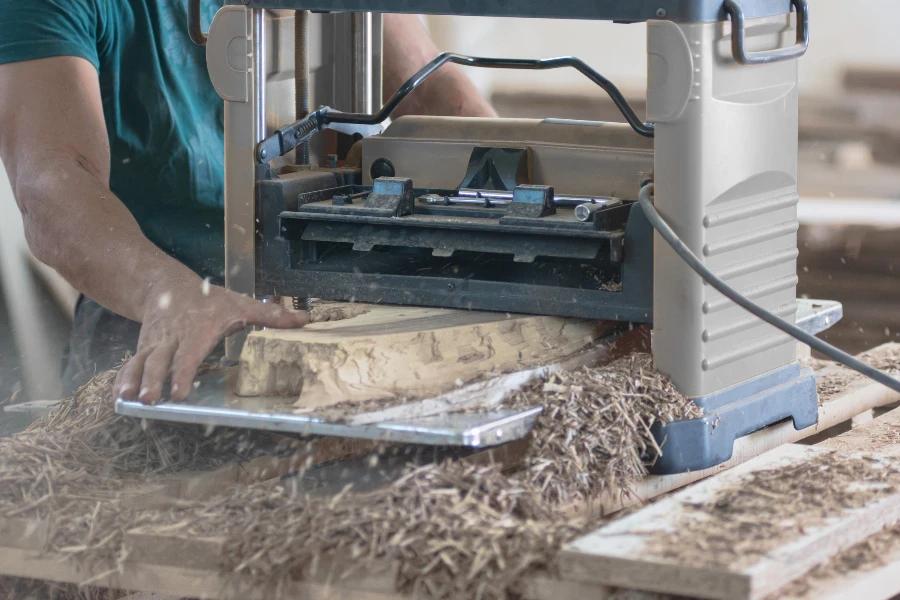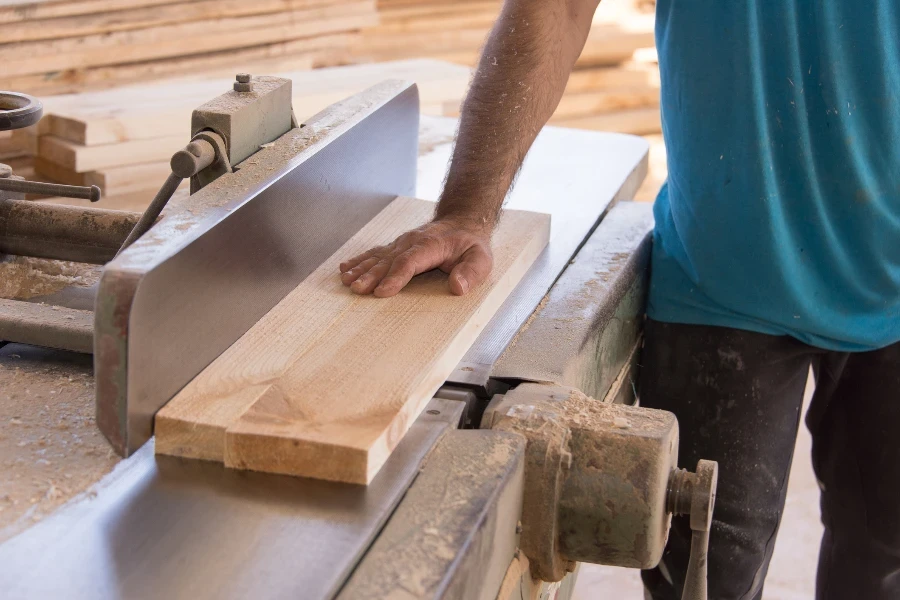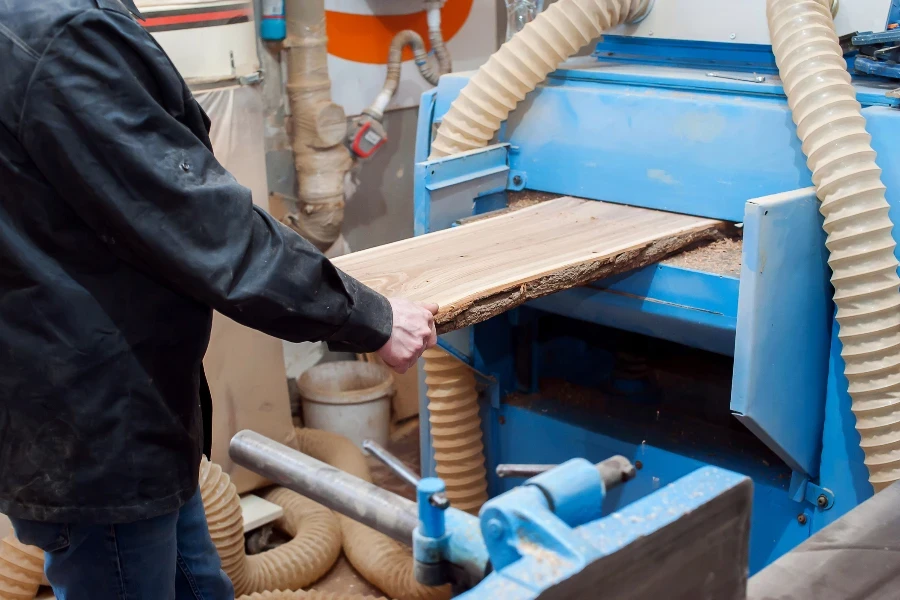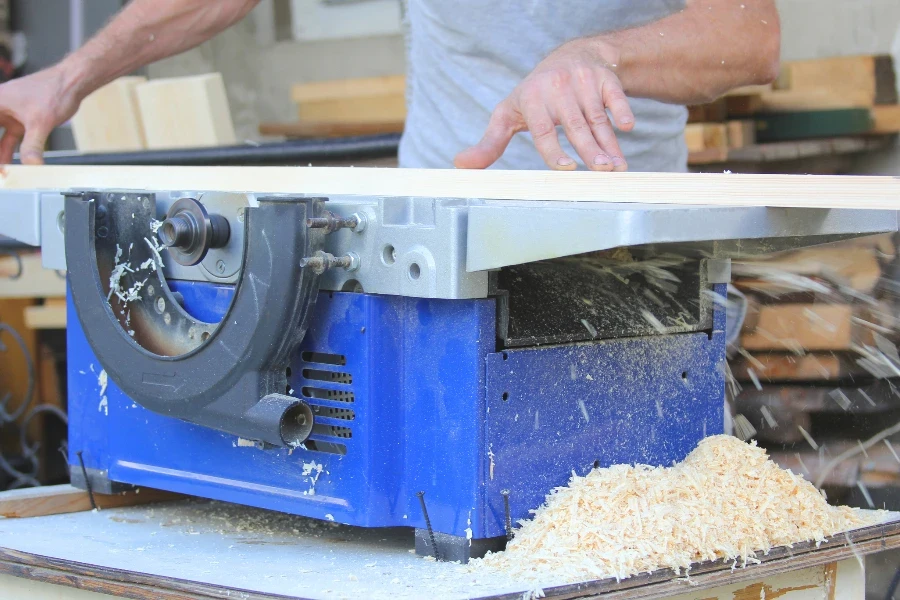Selecting the right wood shaver is crucial for business buyers in 2025, as recent technological advancements continue to shape market dynamics. This article provides an in-depth analysis of the types, performance, design, safety, and latest features of wood shavers, ensuring professional buyers make informed decisions for their business needs. Transitioning into the main text, readers will find valuable insights and assistance tailored to their professional requirements.
Table of Contents:
-Wood Shaver Market Overview
-In-Depth Analysis of the Wood Shaver Market
-Key Factors When Selecting a Wood Shaver
-Durability and Build Quality
-Price Range and Budget Considerations
-Latest Technology Features
-Maintenance and Upkeep
-Alternative Considerations for Wood Shaver Selection
-Evaluating Energy Efficiency and Environmental Impact
-Final Thoughts
Wood Shaver Market Overview

The wood shaver market is experiencing steady growth, driven by the increasing demand for high-quality wood processing tools. The global market size for wood shavers was valued at USD 3.2 billion in 2024 and is projected to reach USD 4.5 billion by 2030, growing at a CAGR of 5.6%. This growth is due to rising construction activities, furniture manufacturing, and the growing trend of DIY woodworking projects. North America holds the largest market share, followed by Europe and the Asia Pacific, where demand is rapidly increasing due to urbanization and industrialization.
The market is segmented by product type, technology, and end-user applications. The primary product types include manual, electric, and industrial wood shavers. Electric wood shavers are gaining significant traction due to their efficiency and ease of use. Technological advancements, such as smart features and energy-efficient motors, are further driving market growth. Key end-users include woodworking shops, construction companies, and individual hobbyists, with woodworking shops accounting for the largest share due to their extensive use of wood shavers.
Market dynamics are influenced by economic conditions, consumer preferences, and technological innovations. Increasing awareness about sustainable and eco-friendly wood processing methods is also driving demand. However, the high cost of advanced wood shavers and the availability of counterfeit products pose challenges. Despite these challenges, significant growth opportunities exist, particularly in developing regions where the construction and furniture industries are expanding rapidly.
In-Depth Analysis of the Wood Shaver Market

Key performance benchmarks in the wood shaver market include precision, durability, and user-friendliness. Manufacturers are focusing on enhancing these attributes to meet evolving consumer needs. Market share dynamics reveal that established brands like Makita, Bosch, and DeWalt dominate the market, leveraging their strong distribution networks and brand reputation. Emerging players from the Asia Pacific region are gaining traction by offering cost-effective and innovative products.
Economic factors such as fluctuating raw material prices and trade policies impact the market. The shift towards DIY projects and personalized woodworking has increased demand for user-friendly and versatile wood shavers. Distribution channel preferences vary, with offline channels like hardware stores and specialty shops being predominant. However, the rise of e-commerce platforms has facilitated easy access to a wide range of wood shavers, offering competitive prices and convenient delivery options.
Recent innovations include the development of cordless wood shavers with long-lasting battery life and smart features like digital displays and automatic adjustment settings. These innovations cater to the growing demand for portable and efficient tools. The product lifecycle stages indicate that while manual wood shavers are in the maturity stage, electric and industrial wood shavers are in the growth stage, driven by continuous technological advancements.
Digitalization is playing a crucial role in the market, with manufacturers utilizing online platforms for marketing and sales. Social trends, such as the increasing popularity of woodworking as a hobby and the rise of maker communities, are also influencing the market. Customer pain points include the high cost of advanced wood shavers and the complexity of using certain models. Brands are addressing these issues by offering affordable options and providing comprehensive user manuals and tutorials.
Brand positioning strategies focus on highlighting the durability, precision, and ease of use of wood shavers. Differentiation strategies involve offering products with unique features, such as dust collection systems and ergonomic designs. Niche markets, such as custom furniture makers and small-scale woodworking shops, provide opportunities for specialized wood shavers designed for specific applications.
Key Factors When Selecting a Wood Shaver

Choosing the right wood shaver for your business can significantly impact productivity, safety, and the quality of finished products. Here are some crucial factors to consider:
Types and Styles
Wood shavers come in various types and styles, each designed for specific applications. The most common types include handheld electric shavers, benchtop models, and industrial-grade machines. Handheld electric shavers are versatile and portable, ideal for small-scale operations or on-site adjustments. They typically feature adjustable blades and ergonomic handles to reduce operator fatigue. Benchtop wood shavers provide more stability and power, making them suitable for medium-scale operations. These models often include features such as dust collection ports and adjustable planing depths, ensuring a cleaner work environment and precise control over material removal. Industrial-grade wood shavers are designed for high-volume production settings. These machines are robust, offering automated feeding systems, multiple blade configurations, and advanced safety features. They can handle large pieces of wood efficiently, making them indispensable in large manufacturing facilities.
Performance and Functionality
Performance is a critical factor when selecting a wood shaver. The motor’s power, measured in horsepower (HP) or watts, directly affects the machine’s ability to handle various wood types and thicknesses. A higher power output ensures smoother and faster shaving, especially with hardwoods. Functionality features such as variable speed controls, depth adjustment mechanisms, and blade types also play a significant role. Variable speed controls allow operators to adjust the shaving speed according to the wood’s hardness and desired finish. Depth adjustment mechanisms enable precise control over the amount of material removed, ensuring consistent results. Blade types, including straight, spiral, and helical, affect the quality of the finish. Straight blades are suitable for general-purpose shaving, while spiral and helical blades provide a smoother finish with reduced tear-out, especially on figured woods.
Design and Aesthetics
The design and aesthetics of wood shavers can impact both usability and workspace integration. Ergonomically designed handles and controls reduce operator fatigue and increase precision. Compact and lightweight models are easier to maneuver and store, making them ideal for smaller workshops. Aesthetics, while secondary to functionality, can still influence purchasing decisions. Modern wood shavers often feature sleek designs with intuitive control layouts. Transparent blade guards and dust collection systems not only improve safety but also enhance the visual appeal of the machine.
Technical Specifications
Understanding the technical specifications of a wood shaver is crucial for making an informed decision. Key specifications include motor power, blade speed, cutting width, and maximum cutting depth. Motor power, typically ranging from 1.5 HP to 5 HP for benchtop models, determines the machine’s ability to handle different wood densities. Blade speed, measured in revolutions per minute (RPM), affects the smoothness of the cut. Higher RPMs result in finer shavings and a smoother finish. Cutting width and maximum cutting depth are essential for determining the size and thickness of wood the machine can handle. Models with wider cutting capacities and greater depth adjustments offer more versatility.
Safety Standards and Certifications
Safety is paramount when selecting a wood shaver. Ensure the machine complies with relevant safety standards and certifications, such as CE, UL, or ISO. These certifications indicate that the product has undergone rigorous testing and meets industry safety requirements. Look for features like blade guards, emergency stop buttons, and dust extraction systems. Blade guards protect operators from accidental contact with the cutting mechanism, while emergency stop buttons allow for immediate shutdown in case of an emergency. Dust extraction systems help maintain a clean working environment and reduce the risk of respiratory issues caused by wood dust.
Durability and Build Quality

The durability and build quality of a wood shaver are critical factors that determine its lifespan and reliability. Machines constructed from high-quality materials such as cast iron and stainless steel are more robust and resistant to wear and tear. These materials also provide better stability, reducing vibrations during operation and ensuring smoother cuts. Pay attention to the quality of the blades as well. High-speed steel (HSS) and carbide-tipped blades offer superior durability and longer service life compared to standard steel blades. Regular maintenance, including blade sharpening and machine lubrication, is essential to prolong the machine’s lifespan and maintain optimal performance.
Price Range and Budget Considerations
Wood shavers are available in a wide price range, from budget-friendly models to high-end industrial machines. Establishing a budget based on your specific needs and production volume is essential. While lower-priced models may be suitable for small-scale operations, investing in higher-quality machines can offer better performance, durability, and safety features, ultimately providing a better return on investment. Consider additional costs such as maintenance, replacement parts, and accessories when evaluating the overall cost of ownership. Some manufacturers offer extended warranties and service packages, which can provide peace of mind and reduce long-term expenses.
Latest Technology Features
Advancements in technology have led to the development of wood shavers with innovative features that enhance efficiency and ease of use. Look for models with digital displays, automated feed systems, and smart sensors. Digital displays provide real-time feedback on machine settings and performance, allowing for precise adjustments. Automated feed systems ensure consistent material removal and reduce operator intervention, increasing productivity. Smart sensors can detect wood density and adjust blade speed and depth accordingly, ensuring optimal performance and reducing the risk of blade damage.
Maintenance and Upkeep

Regular maintenance is essential to keep a wood shaver in optimal condition. Follow the manufacturer’s guidelines for cleaning, lubrication, and blade sharpening. Many modern wood shavers come with built-in maintenance alerts, notifying operators when it’s time for routine servicing. Consider the availability of replacement parts and accessories when selecting a machine. Manufacturers with extensive support networks and readily available parts can minimize downtime and ensure the machine remains operational for years to come.
Alternative Considerations for Wood Shaver Selection
When selecting a wood shaver, it’s also essential to consider alternative factors that could influence your decision. These include the machine’s compatibility with other woodworking tools, ease of use, and the level of technical support provided by the manufacturer. Compatibility with other tools, such as dust extraction systems and workbenches, can enhance the overall efficiency of your woodworking operations. Ensure that the wood shaver you choose can seamlessly integrate into your existing setup. Ease of use is another critical factor. Machines with intuitive controls, clear instructions, and user-friendly features can reduce the learning curve for operators and minimize the risk of errors. Finally, consider the level of technical support and customer service provided by the manufacturer. Access to knowledgeable support staff, comprehensive user manuals, and online resources can be invaluable in troubleshooting issues and maximizing the machine’s performance.
Evaluating Energy Efficiency and Environmental Impact
In today’s environmentally conscious world, energy efficiency and environmental impact are important considerations when selecting a wood shaver. Machines that consume less power can reduce operational costs and minimize your carbon footprint. Look for models with energy-efficient motors and advanced power management systems. Some wood shavers also feature eco-friendly designs that reduce waste and emissions, contributing to a more sustainable woodworking operation. Additionally, consider the disposal and recycling options for the machine and its components. Manufacturers that offer recycling programs or use recyclable materials in their products can help you make more environmentally responsible choices.
Final Thoughts
In conclusion, selecting the right wood shaver involves evaluating various factors, including types and styles, performance, design, technical specifications, safety standards, durability, price range, and the latest technology features. By carefully considering these factors, you can choose a wood shaver that meets your specific needs, enhances productivity, and ensures a safe and efficient woodworking operation.





 Afrikaans
Afrikaans አማርኛ
አማርኛ العربية
العربية বাংলা
বাংলা Nederlands
Nederlands English
English Français
Français Deutsch
Deutsch हिन्दी
हिन्दी Bahasa Indonesia
Bahasa Indonesia Italiano
Italiano 日本語
日本語 한국어
한국어 Bahasa Melayu
Bahasa Melayu മലയാളം
മലയാളം پښتو
پښتو فارسی
فارسی Polski
Polski Português
Português Русский
Русский Español
Español Kiswahili
Kiswahili ไทย
ไทย Türkçe
Türkçe اردو
اردو Tiếng Việt
Tiếng Việt isiXhosa
isiXhosa Zulu
Zulu